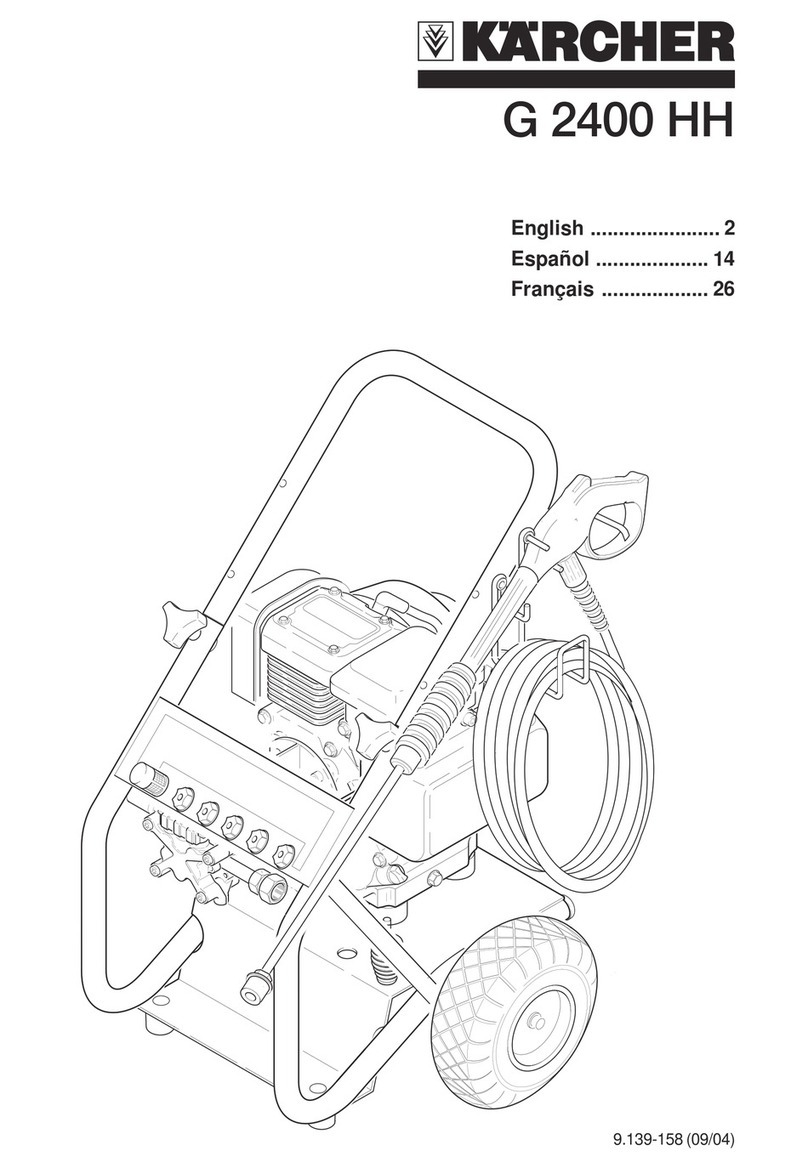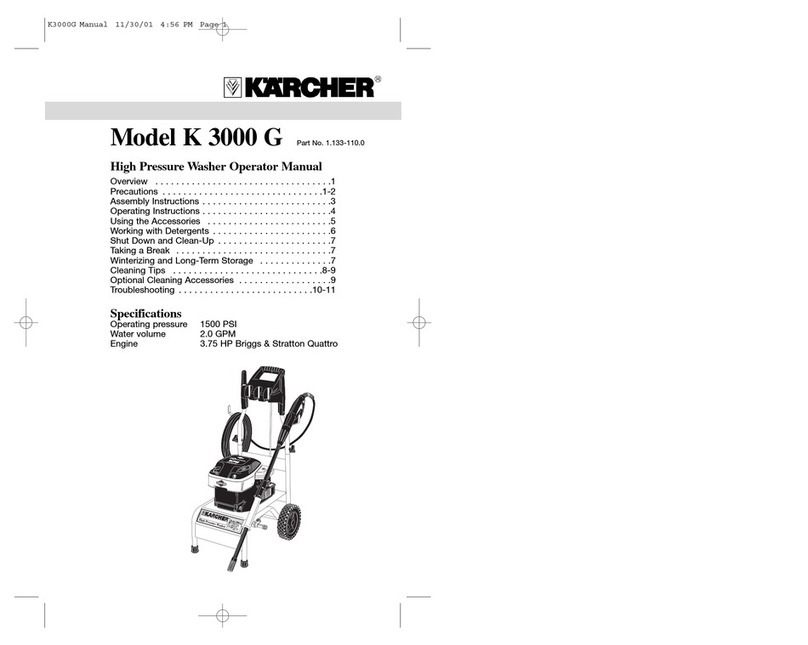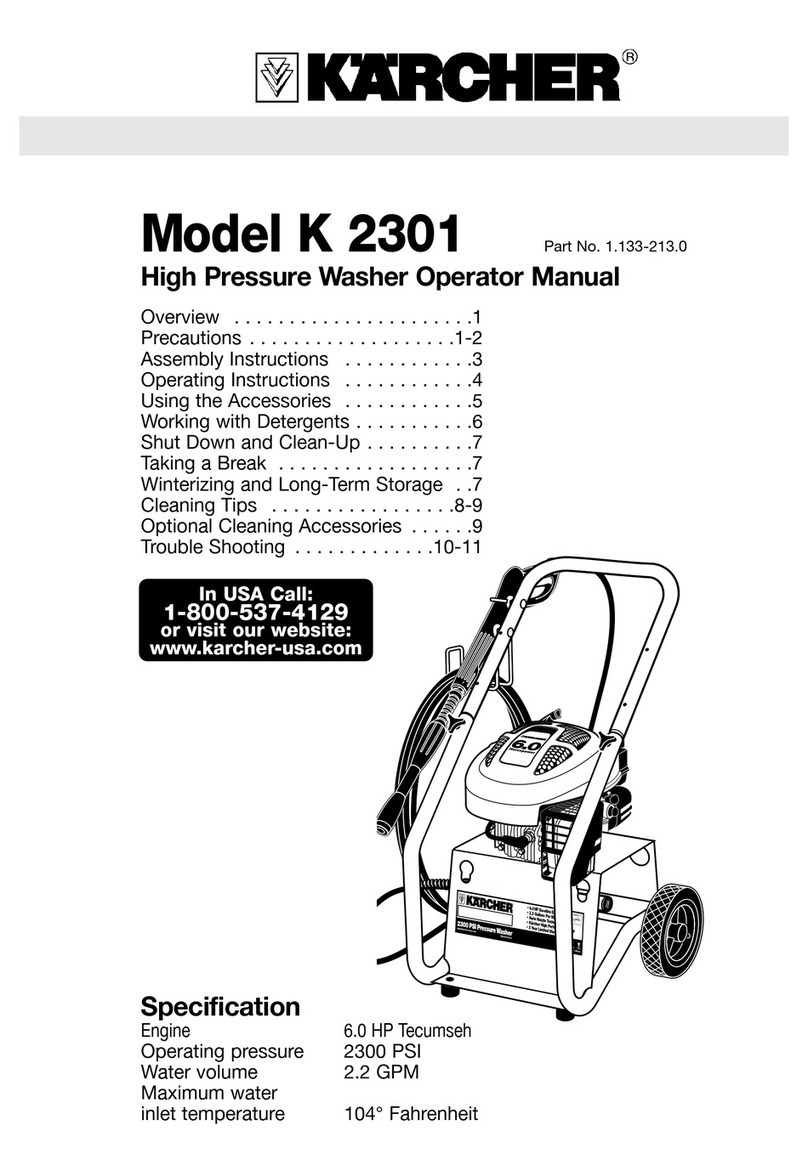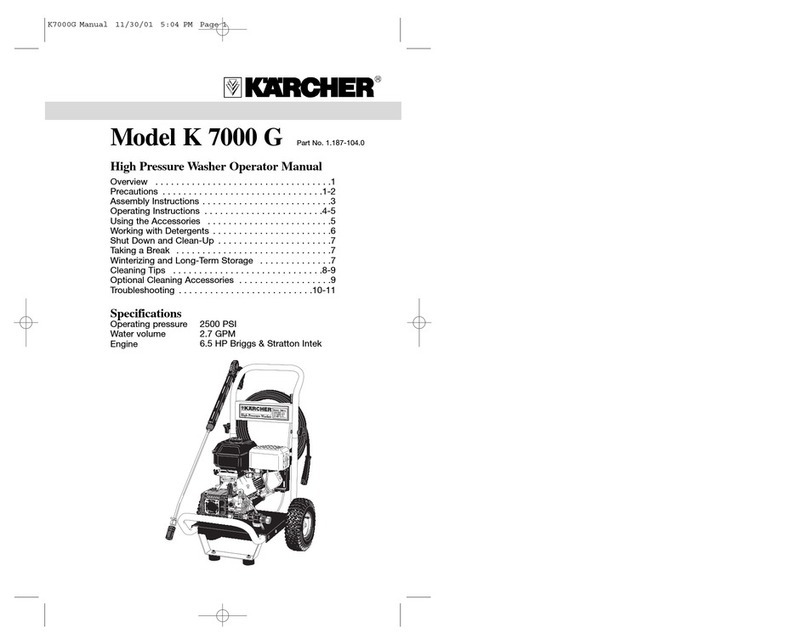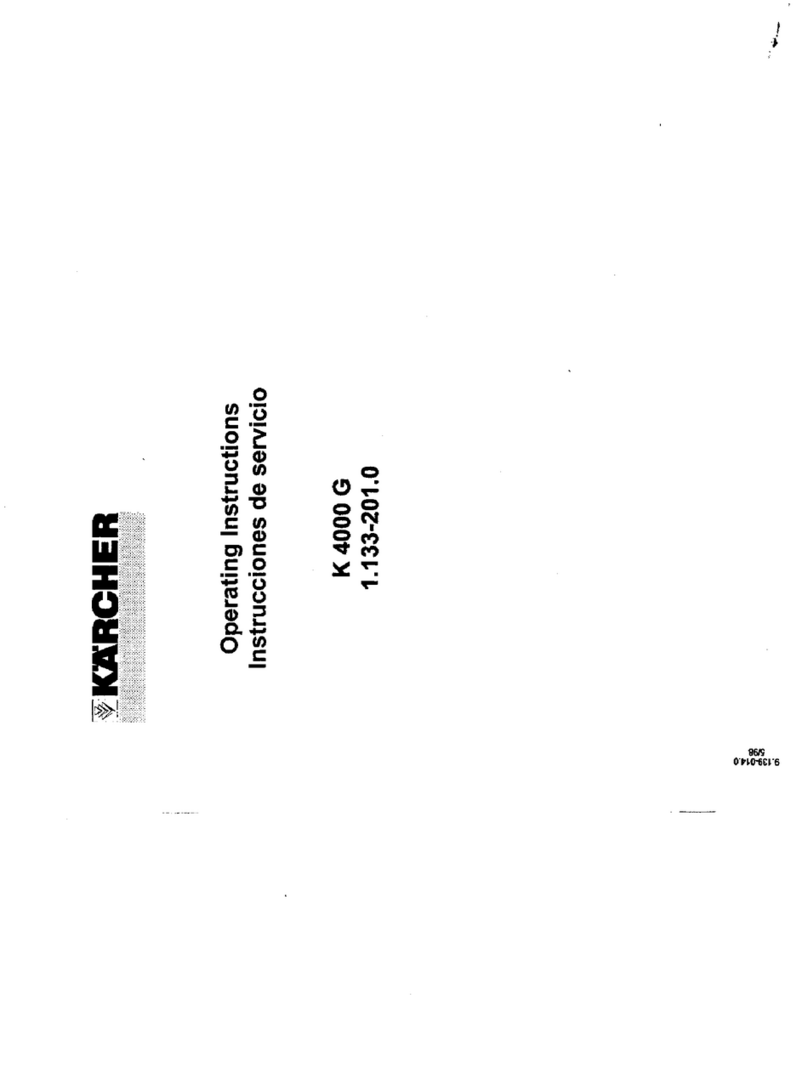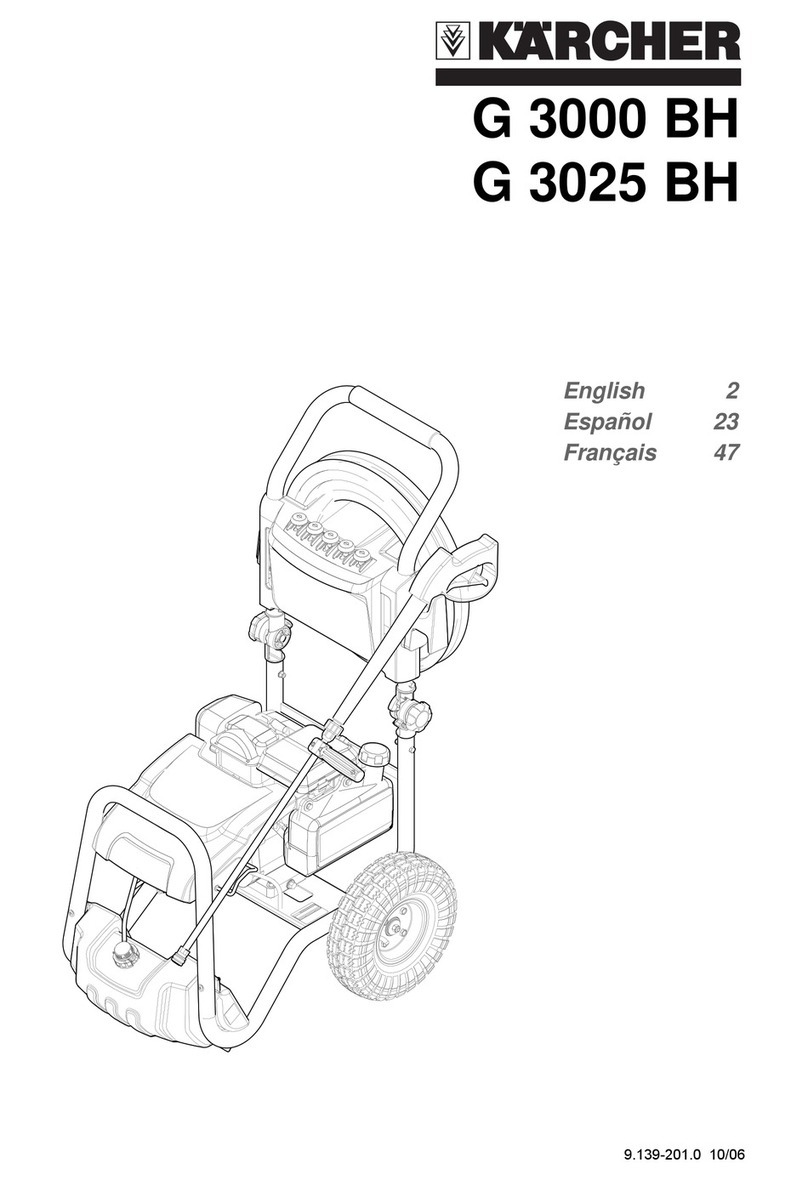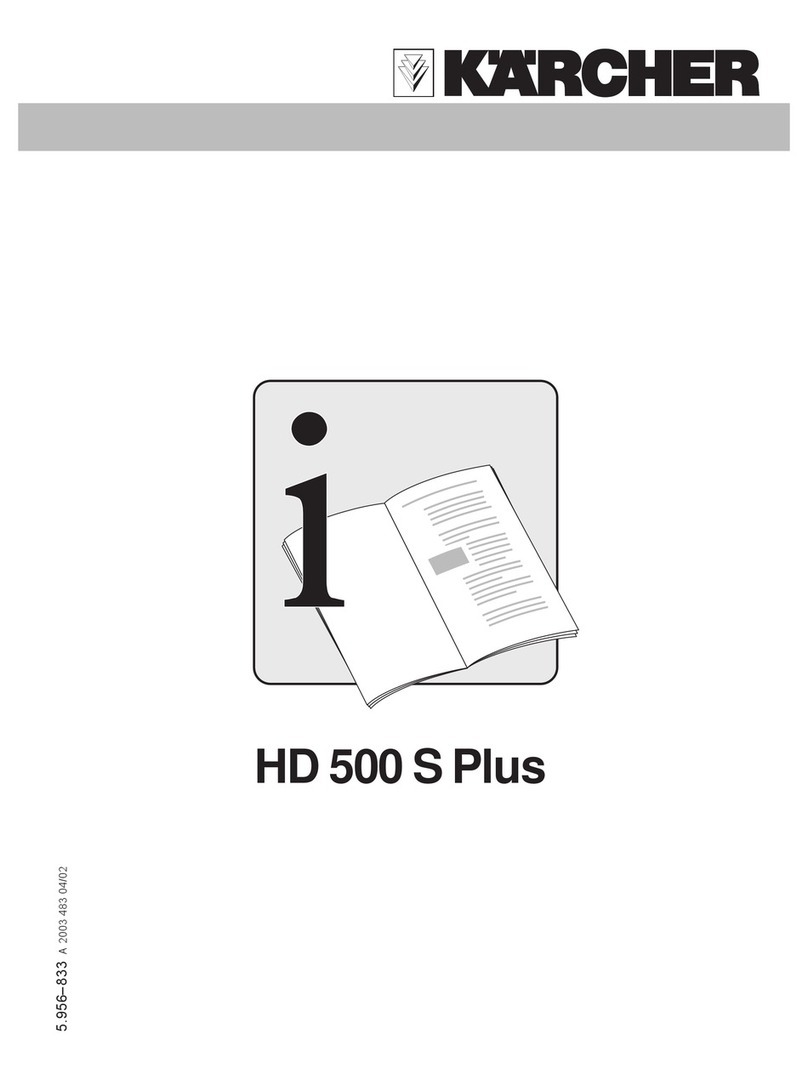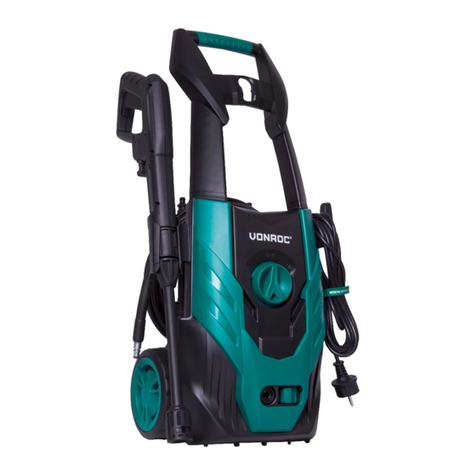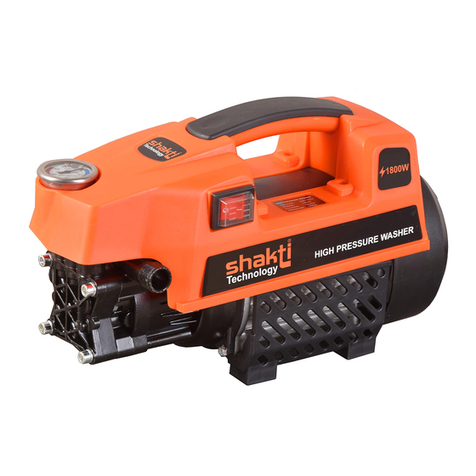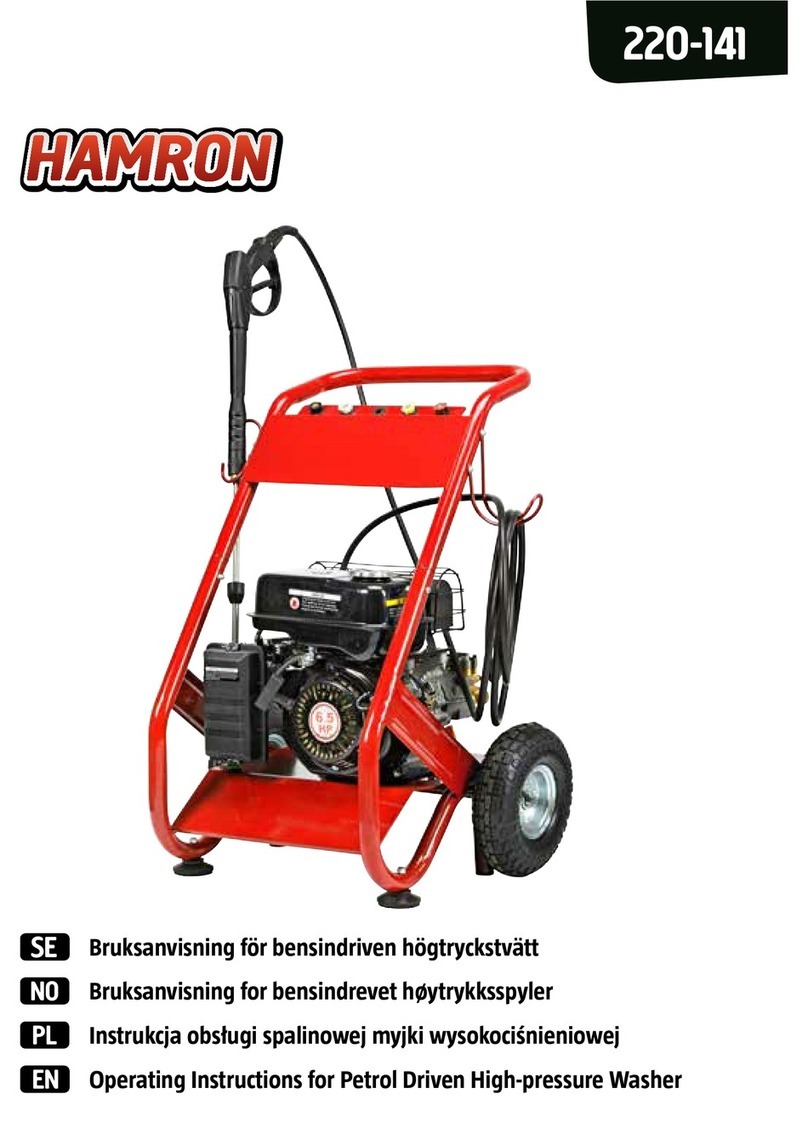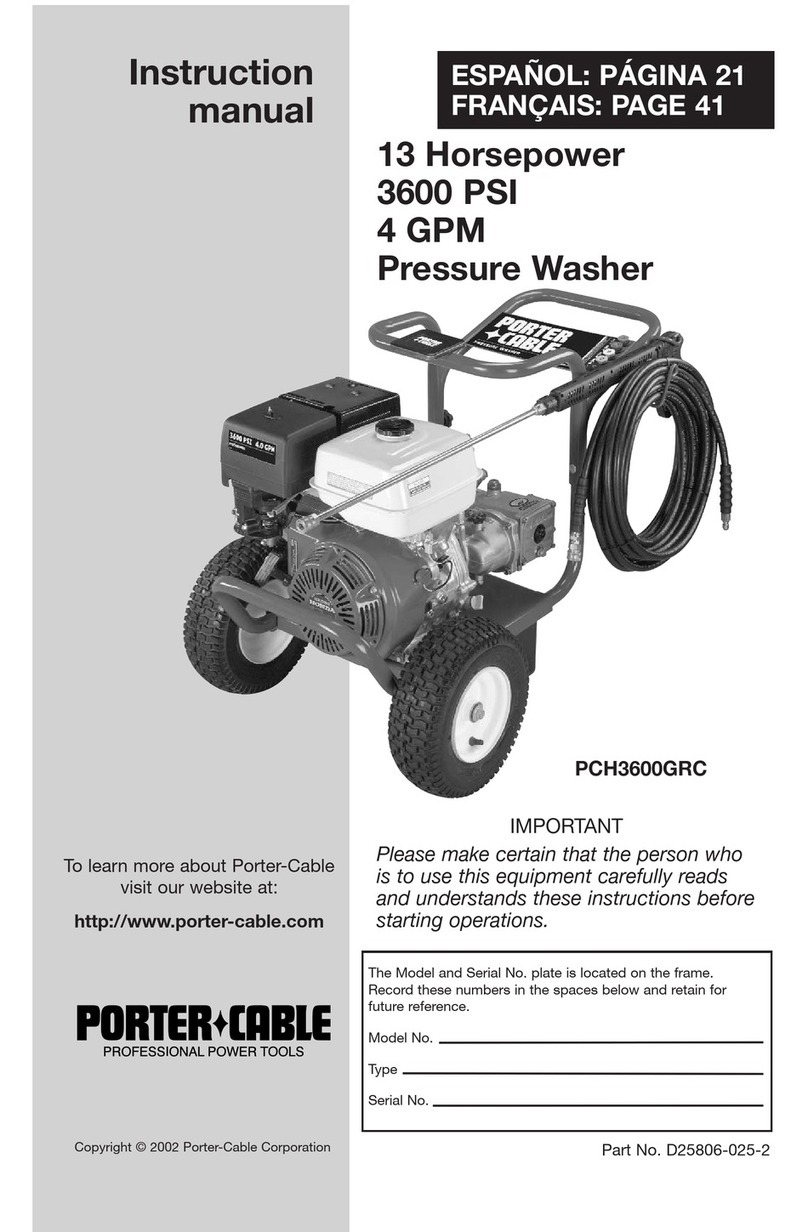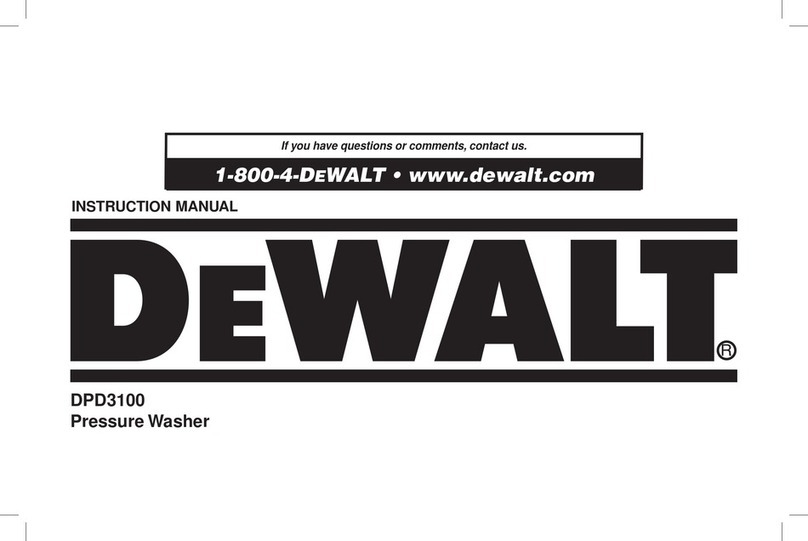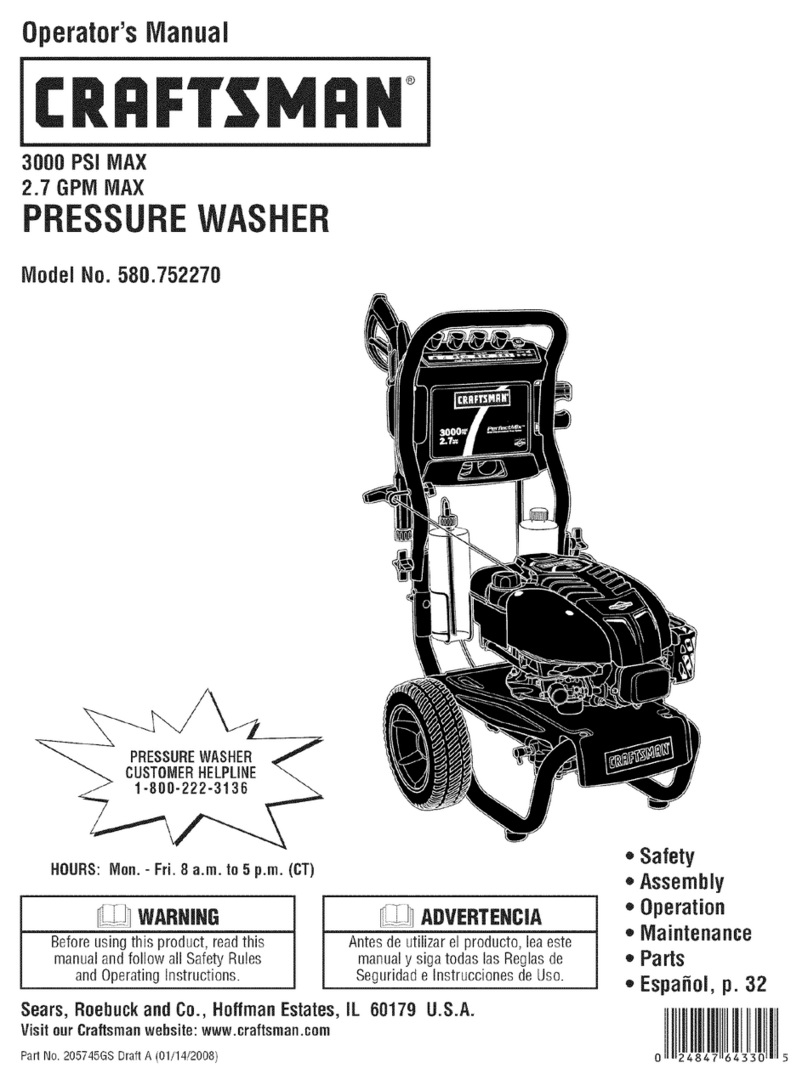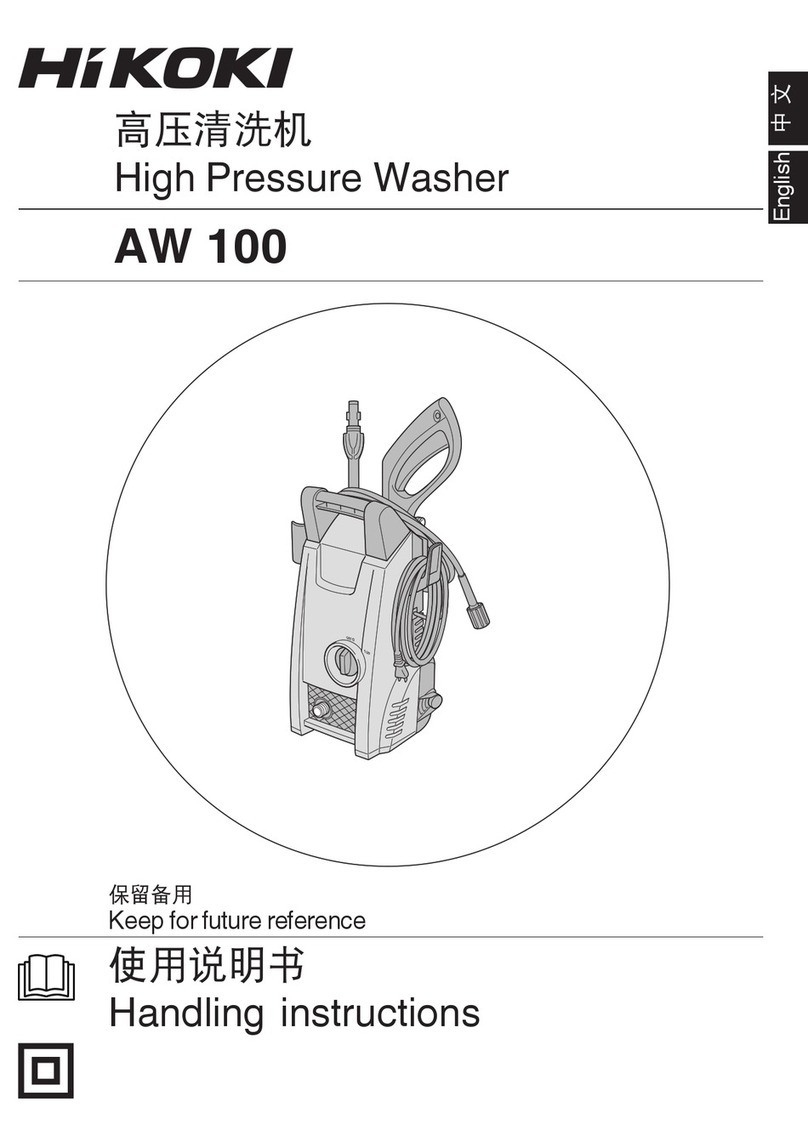English FS 2000 18
FOR YOUR SAFETY!
Study operating instructions
carefully prior to initial start-up!
∗
Only to be operated by qualified
personnel
∗
Unit must be accompanied by
operating instructions if passed on
to third parties
∗
Never make any modifications to
unit
∗
Do not fix hand gun trigger in
position
∗
Do not leave unit unattended
∗
Do not allow children near the
cleaner
∗
Always have damaged piping and
hoses replaced immediately by
After-Sales Service
∗
Make sure piping and hoses are
never kinked, routed over sharp
edges or trapped
Electrical safety
∗
Class I units are only to be
connected to properly earthed
power sources.
∗
All parts carrying electricity in the
work zone must be protected
against water jets.
∗
Only connect unit to sockets
provided with 30 mA residual-
current-operated circuit breaker.
∗
Operation prohibited in baths and
with user standing in water.
National regulations
∗
Operation in Germany is subject
to the guidelines on liquid-jet units
(spraying devices)
ZH 1/406 and the accident
prevention regulations (UVV) BGV
D15 Working with Liquid-Jet Units
as issued by the Principal
Organisation of the Commercial
Employers' Liability Insurance
Associations. In line with
UVV BGV D15 high-pressure
spraying devices must be checked
every 12 months by a qualified
expert, with the results of checking
being recorded in writing.
Information can be obtained from
your retailer.
ZH 1/406 and UVV BGV D15
are available from
Carl HeymannsVerlag KG,
Luxemburger Str. 449,
50939 Cologne.
∗
Observe appropriate regulations
applicable to operation in other
countries.
Commercial applications
∗
In Germany, mobile units for
commercial use are subject to
safety checking in accordance
with VDE Standards.
∗
Observe appropriate regulations
applicable to units for commercial
use in other countries.
∗
Heed appropriate safety
regulations for use at petrol
stations or in other hazardous
environments.
Safety features
∗
Unit is switched off on exceeding
operating pressure.
∗
Safety valve opens if pressure
switch is defective.
∗
Motor is switched off in the event
of overload/overheating.
Personal Protective Equipment
Hazards associated with cleaning
agent!
∗
Observe cleaning
agent/disinfectant manufacturer's
notes on safety and handling
∗
Never allow to come into contact
with eyes and skin
∗
Always wear protective clothing,
as well as mask, protective
goggles, rubber boots and rubber
gloves
∗
Thoroughly wash contaminated
protective clothing with water
Emergency procedures
∗
Heed applicable company
instructions
∗
Observe cleaning
agent/disinfectant manufacturer's
notes on safety and handling
ENVIRONMENTAL PROTECTION
Items used when working, such as
cleaning agent/disinfectant and
contaminated maintenance
materials, are to be deposited at a
special collection point.
Packaging materials, metal and
plastic containers are to be set
aside for recycling as appropriate.






